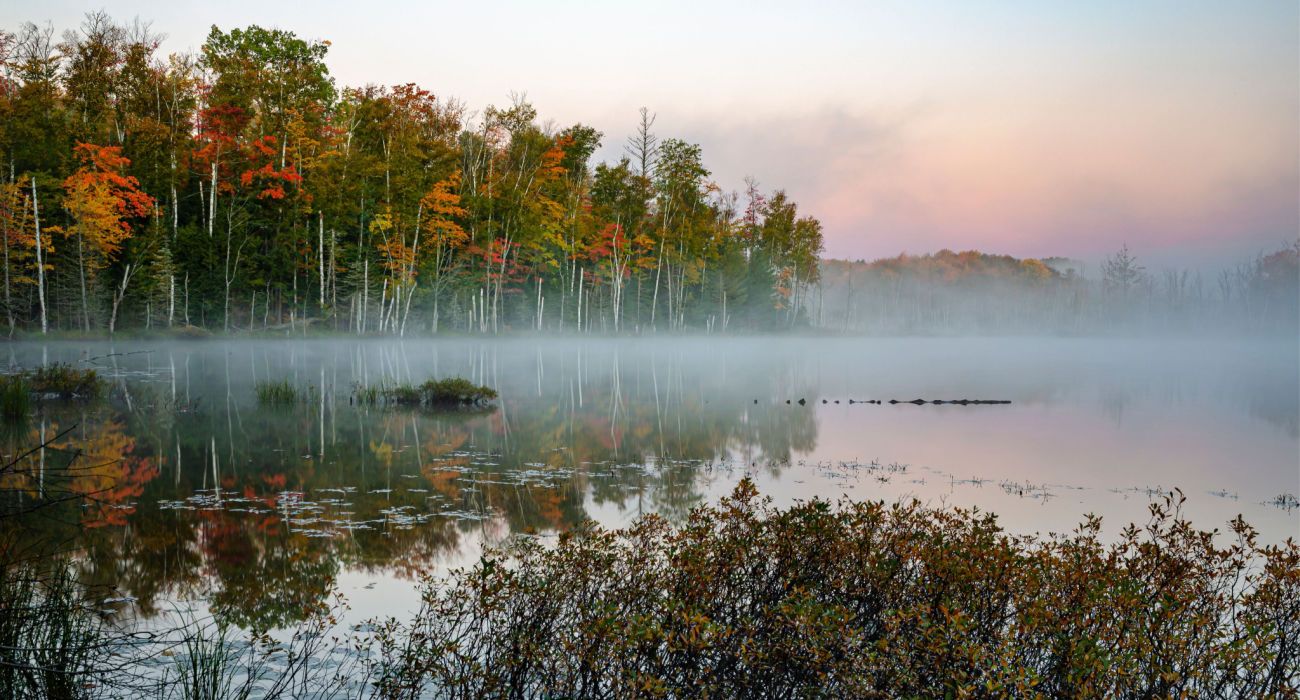Quick Links
The Upper Peninsula of Michigan is a world apart from the Lower Peninsula of the state. While the Upper Peninsula has 29% of the land of Michigan, it has only 3% of its population. It is an outdoor playground and, in the winter, receives some of the most snowfall in the country as it sits in the Snowbelt.
The national forest is a great way to get some respite from urban life. It doesn't get much more remote and wilderness-like on the American side of the Great Lakes than on the Upper Peninsula. One of the main attractions in the Upper Peninsula (called U.P.) is the Hiawatha National Forest.
What To Know Of Michigan's Wild Hiawatha National Forest
The Hiawatha National Forest covers an area of 894,836 acres (362,127 ha) and is administered by the United States Forest Service. It is divided into two units called the Eastside and the Westside. The forests are home to many North American wildlife species found around the Great Lakes region. The national forest was established in 1931.
- Size: 894,836 acres (362,127 ha)
Wildlife includes timber wolves, black bears, moose, coyotes, river otters, white-tailed deer, golden eagles, bobcats, bald eagles, and others. Off the coast of the Upper Peninsula is the remarkable Isle Royale National Park which is famous for its unique relationship between moose and wolves on the island.
The Hiawatha National Forest has shorelines on three of the great lakes - Lake Superior, Lake Michigan, and Lake Huron.
- Great Lakes: Lake Superior, Lake Michigan, and Lake Huron
There are six wilderness areas in the forest, they are:
- Big Island Lake Wilderness
- Delirium Wilderness
- Horseshoe Bay Wilderness
- Mackinac Wilderness
- Rock River Canyon Wilderness
- Round Island Wilderness
Exploring the Upper Peninsula is all about exploring the grand outdoors of the Great Lakes.
What To See & Do While In Hiawatha National Forest
There are plenty of hiking trails running through the Hiawatha National Forest - one of the most notable is a section of the 4,600-mile-long (7,400 kilometer-long) North Country Trail.
There is a huge variety of things to do in the Hiawatha National Forest (summer and winter alike). During the summer, visitors explore the forest by camping, hiking, horse riding, and other activities.
Summer Activities:
- Camping
- Hiking
- Horseback Riding
- Off-Roading
- Kayaking & Watersports
Winter Activities:
- Winter Camping (or Rustic Cabins)
- Snowshoeing
- Cross-Country Skiing
- Snowmobiling
- Ice-Fishing
It's not possible to go into detail about all the trails in the national forest, but they are listed on the Forest Service website. There are plenty of campsites dotted throughout the forest as well. Come the winter, life in the Upper Peninsula does wind down. Folks here have learned to embrace the winter and the heavy snow. During the winter, visitors can explore many of these trails by cross-country skiing, snowmobiling, and snowshoeing.
Explore The Historic Lighthouses Of The Hiawatha National Forest
One of the historical attractions in the Hiawatha National Forest is the heritage lighthouse on Round Island. There are several lighthouses along the national forest's 100 miles of shorelines. Of these, the Point Iroquois Lighthouse is a historic lighthouse that's operated as a museum. It is located at the connection between Lake Superior and the other Great Lakes.
The Point Iroquois Lighthouse has been on the National Register of Historic Places since 1975. It is located high above the waters of Lake Superior at the entry to St. Mary's River. It is named after a battle that took place there in 1662 between the local Ojibwa (also known as the Chippewa or Anishinaabeg) and an invading Iroquois war party. The Iroquois were defeated and massacred.
Point Iroquois Lighthouse:
- Status: Open To The Public
- First Built: 1855
- Function: Retired, Today A Museum
The first lighthouse was built there in 1855, and the wooden tower was replaced by the brick one seen there today in 1870. After 107 years of guiding ships, it was replaced with an automatic light off Gros Cap, Ontario.
Today the lighthouse is open to the public, and visitors can enjoy self-guided tours on the new Hiawatha's OnCell App! Visitors can climb up the spiral staircase up the 65-foot lighthouse tower. Go in the summer; there are periodic interpretive programs offered that delve into the history of the historic lighthouse.

